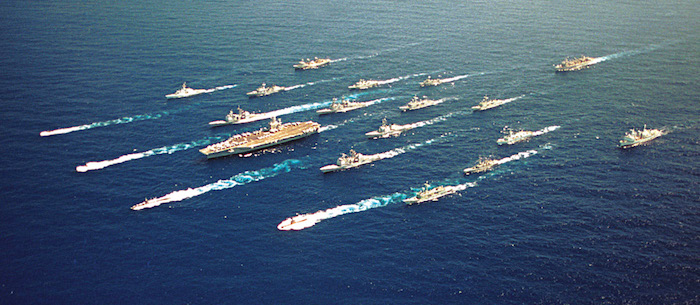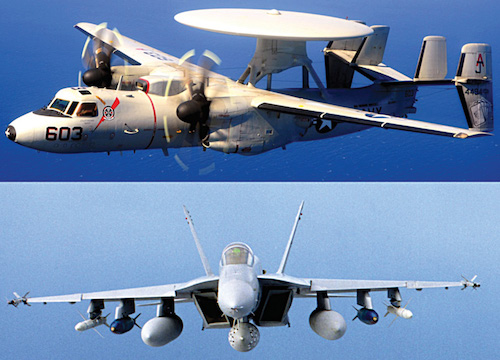An aircraft carrier is a moving airbase that can house approximately hundred combat aircraft. Being a ship, it can also sail to its war theatre quickly. By remaining in international waters, it can launch punitive airstrikes on enemy targets. A combat aircraft can drop two tons of bombs in one go. So, hypothetically, 100 aircraft from a carrier can drop 200 tons of bombs on the enemy’s head, at a time.
A century ago, after the invention and eventual militarisation of the aircraft, somebody from the navy thought, “Why do we not operate aircraft from larger ships?” This idea led to the construction of a cantilever on a ship, from which the aircraft took off and landed on.

This resulted in the construction of dedicated aircraft-operating ships, which were called aircraft carriers or, simply, carriers. But these were not taken seriously, initially, and were used only as escorts or scouts to battleships, because during that era, combat aircraft itself was not considered an effective weapon altogether.
This perception changed during World War II as Luftwaffe (German Air Force) taught damaging lessons to allied nations about the combat prowess of aircraft.
From the other side of the globe, Japan delivered a devastating aerial strike at Pearl Harbour using their carrier based aircrafts. In one stroke, they almost entirely decimated the Pacific fleet of the US Navy (USN) but missed to destroy US navy’s carriers.
USN, after losing powerful battleships, had to retort to aircraft carriers as primary fighting weapons. It urgently assembled various ships to form taskforces with carriers as centrepieces and other ships to protect the carriers. These taskforces proved their mettle in the subsequent Battle of Midway and numbed the supremacy of Imperial Japanese Navy (IJN) in the Pacific. From that instant, aircraft carriers took the driving seat in naval warfare.

Years after World War II, these taskforces morphed into formidable naval forces called carrier strike groups (CSGs). CSGs pack enormous strike power but, at the same time, come with a sky-high bill. For CSGs to survive and unleash their power, various electronic systems serve as the backbone. The electronic systems present in USN’s CSGs and how these play crucial roles are the subject of foci in this mil-tech article.
Defensive combat operations
The purpose of a CSG is power projection; in simple words, launching combat aircrafts from the carrier stationed at deep seas and bombing the enemy. But the carrier being a highly-praised and priced target, objective of the enemy is to first destroy the carrier when the war begins. This could even turn the tide of the war.
Being a gigantic sitting duck on the sea, the enemy can easily find the carrier and attack either using aircraft, surface ships or submarines. So, in order to protect the carrier, a CSG typically comprises four to six destroyers (a kind of warship), two cruisers (a larger warship) and a nuclear attack submarine.
Destroyers are highly specialised in defending the carrier from threats posed by enemy surface ships and submarines. These also have respectable capability against aircrafts.
Cruisers, which are slightly larger than destroyers, are specialised in taking care of enemy air threats. Due to a larger size, these possess more weapon capability than destroyers. While destroyers operate at around 40km from the carrier to form a defensive perimeter against surface and sub-surface threats, cruisers operate in the vicinity of the carrier to provide air defence.
The two complement each other. Through a myriad of sensors, these can detect and neutralise the threats arising from all directions. Nuclear submarines sail well-ahead of the carriers looking for enemy submarines and operate loosely bound to the carrier. All these vessels try to form an impenetrable virtual bubble around the carrier.
A CSG wages offensive air strike battles (strike warfare) on the enemy and, at the same time, wages defensive battles against enemy aircrafts, enemy submarines and enemy surface vessels.
Air defence warfare
During World War II, in Battle of Midway, a group of aircrafts from the USN came directly above IJN carriers Soryu, Kaga and Akagi, and bombed these. This was the turning point of War at Pacific and even of World War II. Losing these carriers in just minutes proved too crippling for Japan, which ultimately put an end to Japanese Empire’s naval supremacy in the Pacific in the days that followed. This ultimately led to the defeat of the Empire of Japan itself.











